World War has been reimagined in a lot of different ways in video games. The most popular adaptations were probably first-person shooters. Some of the smaller but less popular adaptations were also seen in the real-time-strategy genre. Widely considered the best adaptation in the World War genre for real-time strategy – Company of Heroes – has gone on to define a place for itself. The original game came out in 2006 and was an instant hit when it came out for its realistic depiction of warfare. Company of Heroes is finally back with its third installment, exploring some of the unexplored sectors of warfare that happened during World War 2.
Company of Heroes 3 is a daring take on the Italian and North African front for World War 2, developed by Relic Entertainment and published by SEGA. The game was released in February 2023 on the PC and came out later in May 2023 on the PS5 and the Xbox Series X. Company of Heroes 3 is the first title of the series to be launched on consoles, with the first two titles being exclusive to the PC.
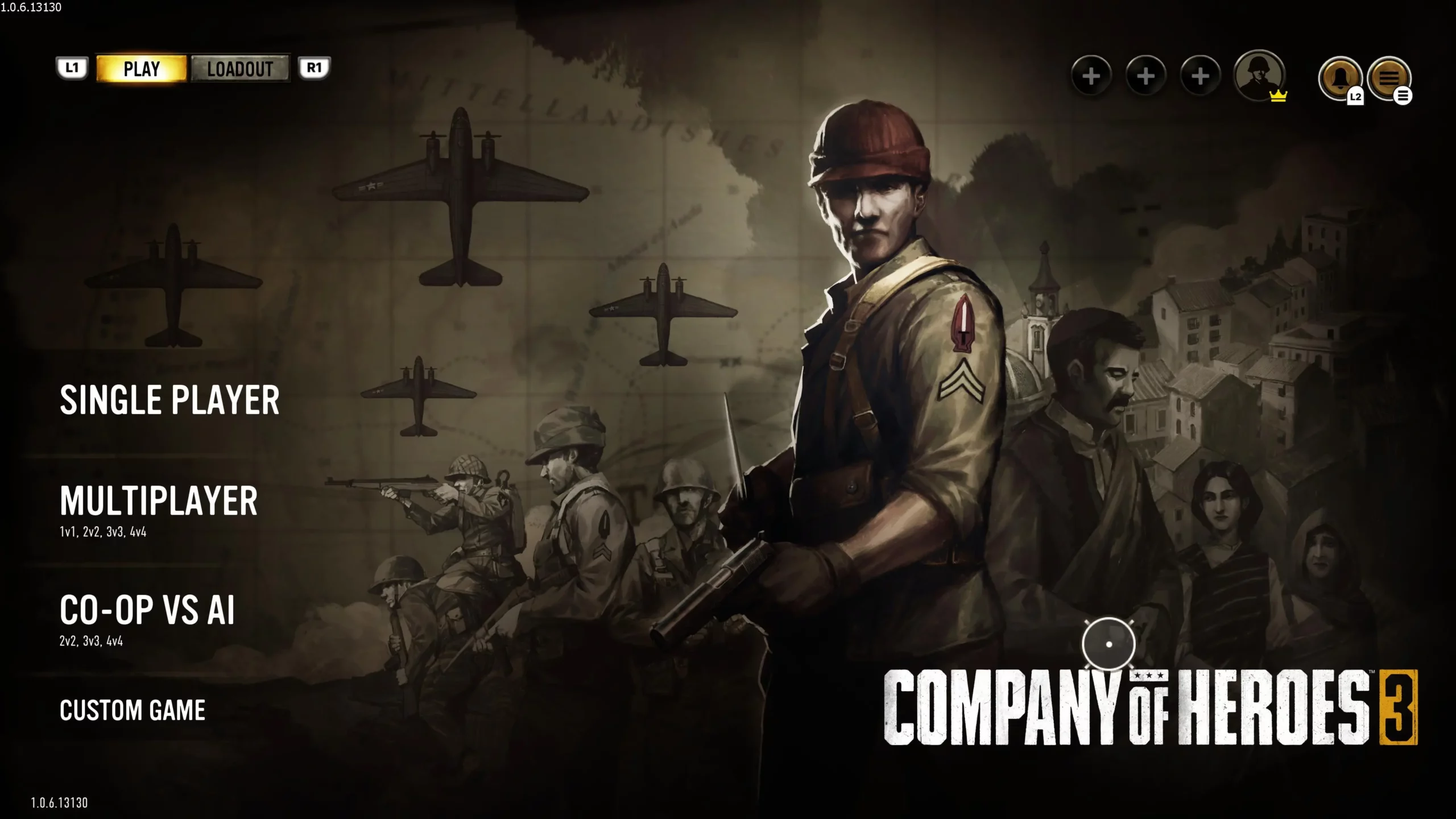
Children of War
When we talk about World War 2, we generally mean the Western Front in Europe. The battles of the Western Front are very well represented in all forms of literature (including video games). The representation of the Italian, Japanese, or North African battles is very few in actual media. Company of Heroes 3 takes the game to the Italian and North African battlefields. Being Asian, I expected to see a Japanese campaign as well (descending from ancestors who have fought against the Japanese), but I was disappointed. Well, there’s always a possibility of a DLC that does the job.
The Allied campaign sees the US and European forces unite to aid each other in the conquest of the Italian peninsula. Similarly, the Axis campaign sees the German Afrikan Korps fight against the Allied forces in North Africa. Led by Erwin Rommel, North Africa was probably the most successful military campaign led by the Axis powers during the war – and the game does a good job of telling its story.
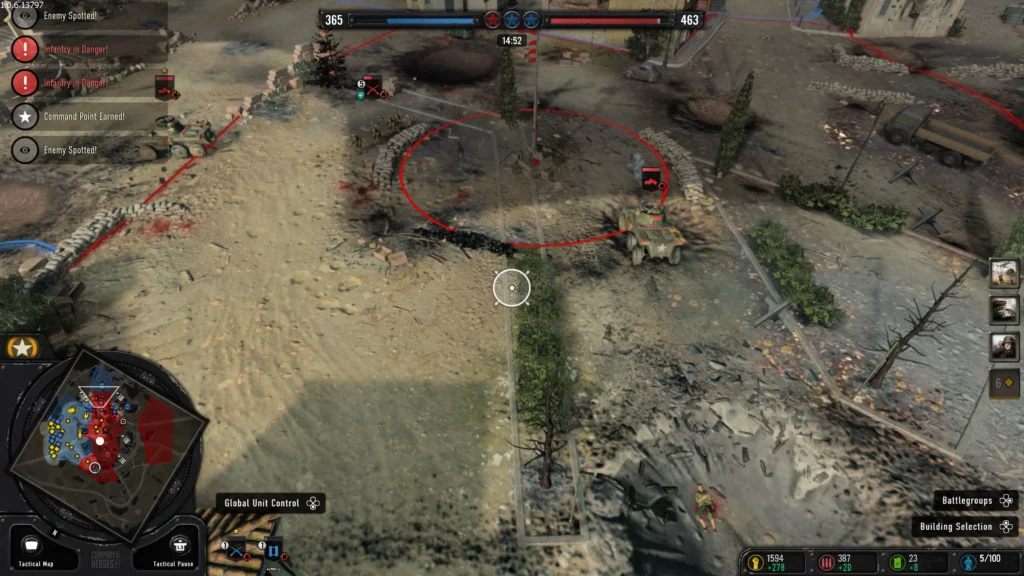
Campaign stories now take place on a large map where combat units are deployed and combat is processed turn by turn. The campaign has more of a 4x feel to it, whereas actual RTS gameplay happens when a conflict happens on the map. Turns alternate between you and the AI on the game board, though the enemy turns really don’t have much stuff happening (except during the first few scripted missions). The AI is very passive even on higher difficulties, solely relying on defensive strategies throughout the campaign. The campaign seemed problematically easy on many points even during the RTS sections, mainly because the AI decides to make moves based on a game of rock-paper-scissors – making it super easy to predict (and counter). While the gameplay on an actual map adds extra gameplay elements to care about, the lack of counter-play from the AI knocks it out of the water.
Skirmish is back! Also, skirmish mode is not paywalled behind DLC like in Company of Heroes 2 – something I hated a lot when I started playing the game. Moreover, there is a coop vs AI game mode for those who want to play a good old hot seat game and beat the crap out of super-intelligent computers. In Skirmish mode, the AI poses a bigger threat than in the campaign – optimizing its approach for pushes and retakes of points. Even on lower difficulties, the enemy AI puts on the pressure early and never lets up. Moreover, the point ticker ticks down much faster than before, so it’s imperative that you come up with a strategy to take back points as soon as they are lost – lose control for too long, and you will have a lot of enemy squads or vehicles and/or traps working against you preventing you from taking the point. Skirmish games are now much faster because of it, and I personally welcomed the change.
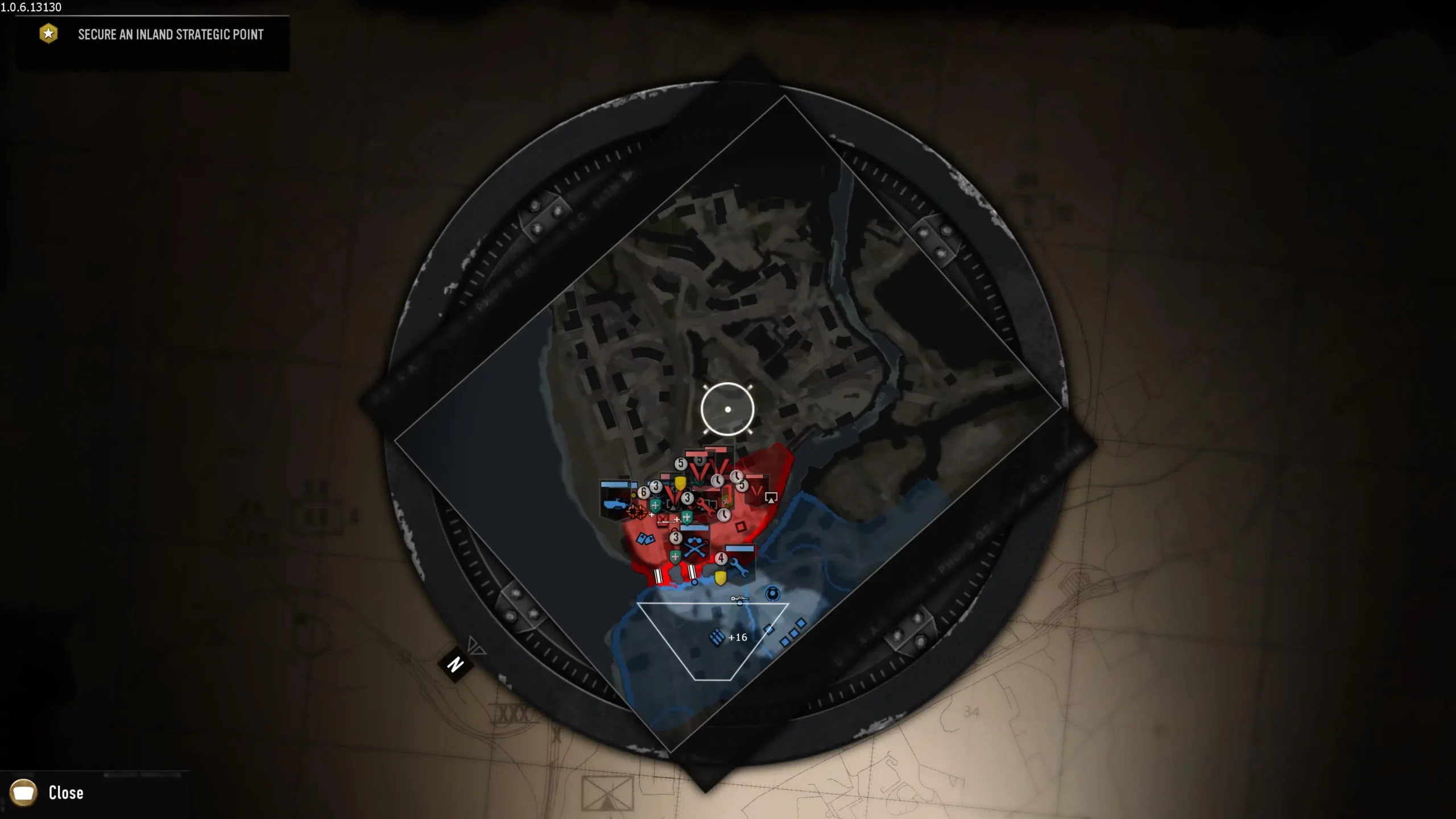
Realistic Warfare on a Minified Scale
Company of Heroes 3 is a game about commanding squads and vehicles of war, taking over points, and holding them till you win. The more points you hold, the more resources you will have at your disposal. Both sides have a number of points to start off with, holding crucial points on the battlefield makes the enemy’s counter go down faster. The team whose counter hits zero before the other loses.
Company of Heroes 3 takes the best parts of the previous two games to make gameplay more fluid and responsive. While the campaign fails to deliver, the smaller but more meaningful additions make gameplay easier. When I started off, I was surprised to see that engineers were no longer needed to carry out construction activities. You can deploy engineers to construct defenses and just issue orders for building construction directly to your HQ. This small feature allows engineers to be present for a greater time on the actual field doing what they do best – making it difficult for the enemy to take back lost points. Also, engineers can auto-build structures whenever you have the resources for them. Engineers also auto-build production buildings as long as they have the resources for it. This also helps secure the resource point from the enemy and hold out long enough for reinforcements to come. The buff to engineers makes them the best possible squad to put into the fray – they can also pick up weapons from fallen comrades like machine guns or flamethrowers to increase their firepower.
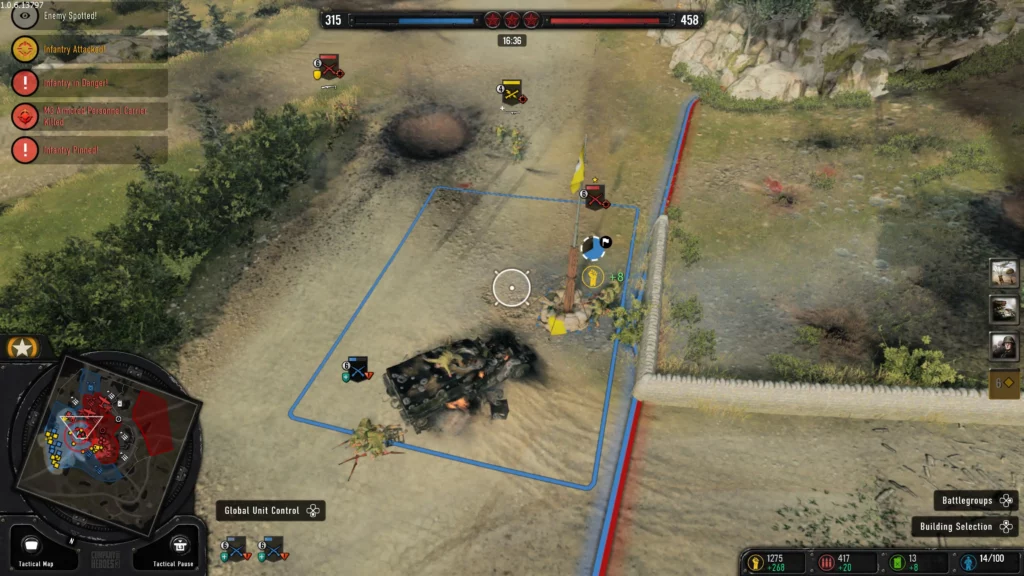
The fundamental unit of Company of Heroes 3 is a squad, not a unit. Some squads, like the sniper, operate alone (because their job needs them to do so) – most others have a bunch of soldiers fighting together, common examples being engineers or riflemen. Squads are much more spread out now than before, which means that it is more difficult to suppress and/or deal damage to the squad. (One small tip – this means that flamethrower squads are now more effective than machine gunners at flushing out entrenched enemies). Another big positive that I felt was that units can auto-reinforce now. Just construct a medical tent and every time your squad takes a beating, they can just retreat to have freshmen join the squad for battle. This ensures veteran squads are almost never completely taken out, seeing that reinforcement is done automatically. Moreover, height bonuses for cover in addition to terrain bonuses are back. In other words, this means that a unit at a higher ground will have an advantage over a unit below it. Squads are much more intelligent now, vaulting manually over walls and obstacles, allowing them to reach otherwise unreachable areas. I didn’t have to wait for my squads to take the main road and get shot at just because they cannot vault over a wall – something which doesn’t seem like a great deal but makes a huge impact.
One significant improvement the game has added is allowing the infantry to breach occupied enemy housing. Like previous titles, infantry can take refuge inside buildings and counterfire on exposed enemies. The building adds a layer of protection for the infantry, leaving enemies little option but to blow up the building or burn it to shreds. Now, infantry can easily breach a garrisoned structure and try to force enemies out of it. The animation produced during the breaching is also captured nicely, properly simulating what actually happens during such a breach. This forces you to be on alert always, as a building occupied by your forces can easily be flushed out at any point.

Most vehicles in previous games had armor only on the back and the front. Vehicles are very heavily armored at the front, and very weakly armored at the back. One quick way to take out vehicles in the previous games was to hit the sides with heavy weapons or other heavy vehicles or tanks. Now, even the sides have some armor on them – the loophole found in previous games can no longer be exploited. Side armor is weaker than front armor and stronger than rear armor, so it’s back to listening to the tutorial messages about hitting a vehicle in the rear to take it out easily.
Most of the fundamental gameplay formula has been retained from previous Company of Heroes games – making it a decent third entry in the franchise (could even have been good if the campaign itself wasn’t such a huge letdown). If you’re new to RTS games or to Company of Heroes, the tutorial teaches you enough to get started. Most of the remaining stuff is taught to you when you complete missions during the Allied campaign. The controls and frequent movement are a bit difficult on a console, but using hotkeys to assign units to control groups and using control groups to take over points is much easier now. Being the first port for the consoles, Company of Heroes 3 manages to bridge the gap between controls of PC and console quite a bit, even though it means having an overly cluttered mess of a UI on either platform.
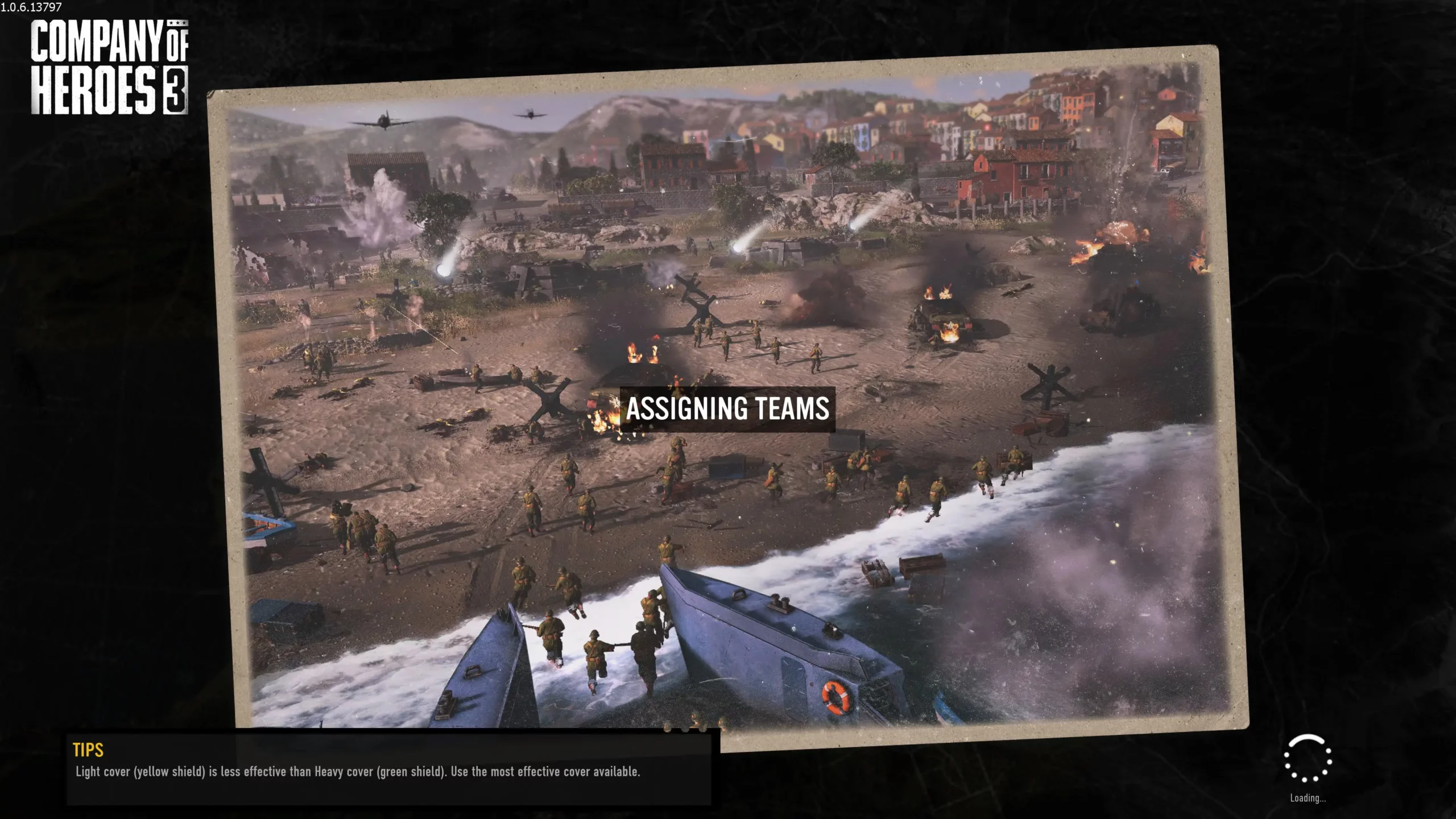
Traditional Performance Drops and Beautiful Music
Company of Heroes 3 employs the most realistic sounds of warfare that one can imagine. Proper sound effects have been a metric for the games since the launch of the first game itself. The sound of mortars in a city being besieged by weaponry, explosions here and there, the bursts from artillery being fired upon the landscape – all of it recreates the horrors of World War 2 properly. With that being said, do reduce the volume of ambient sounds if you are feeling jump scares from the sound of random explosions or mortar fire – it can feel overwhelming at times.
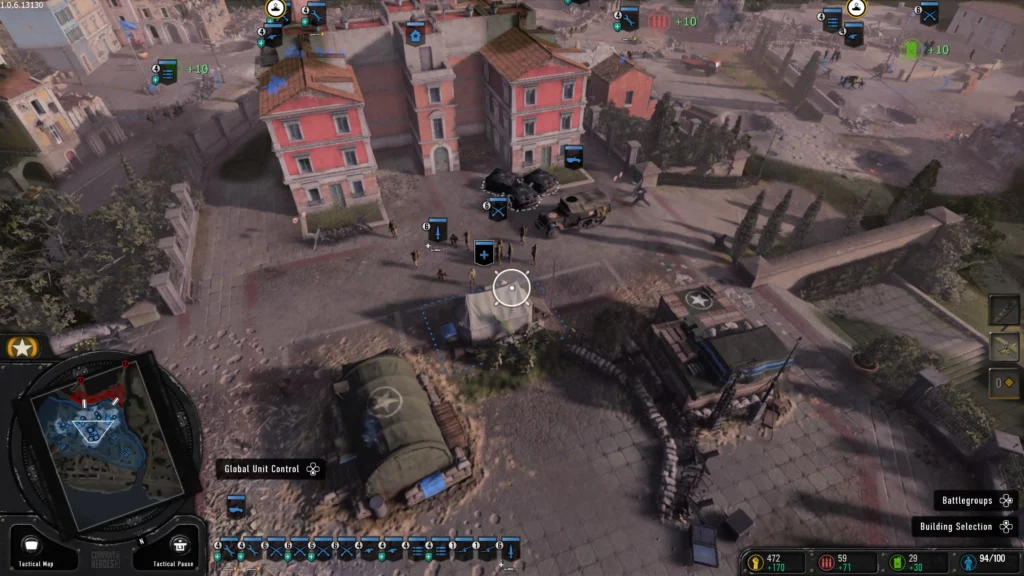
Regrettably, Company of Heroes 3 suffers from the same performance issues as its predecessors. It seems that even the advantage of having one architecture to optimize the game for is not enough for Relic Entertainment, as even the PS5 suffers from heavy FPS drops during heavy explosions or when a lot of action is happening on the screen. With some patches, the game has become much more playable, but the FPS still starts tanking when a lot of action is happening at once.
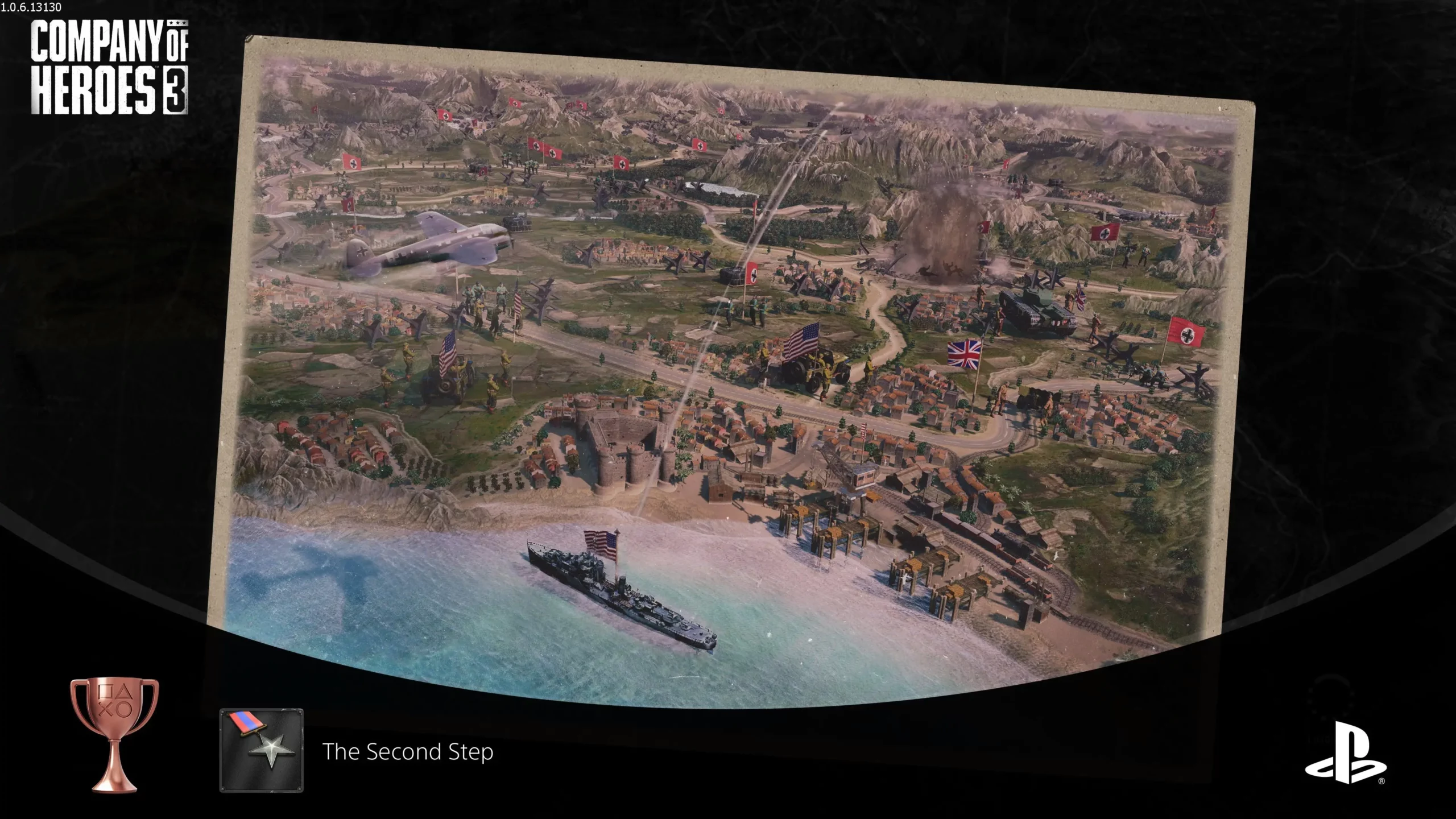
Company of Heroes, But Better
Company of Heroes 3 is the third entry in the franchise that tries to do something new for the WW2 genre of video games for some of the unexplored theaters of war. Being the first title of the series for consoles, it suffers from some issues like performance problems or an overly cluttered UI – but most of its tactical features make it stand out as a game that is complicated to get into, yet easy to learn and play. Overall, it is worth a buy during a sale – especially if you’re getting it on the PS5.
FINAL RATING:75/100
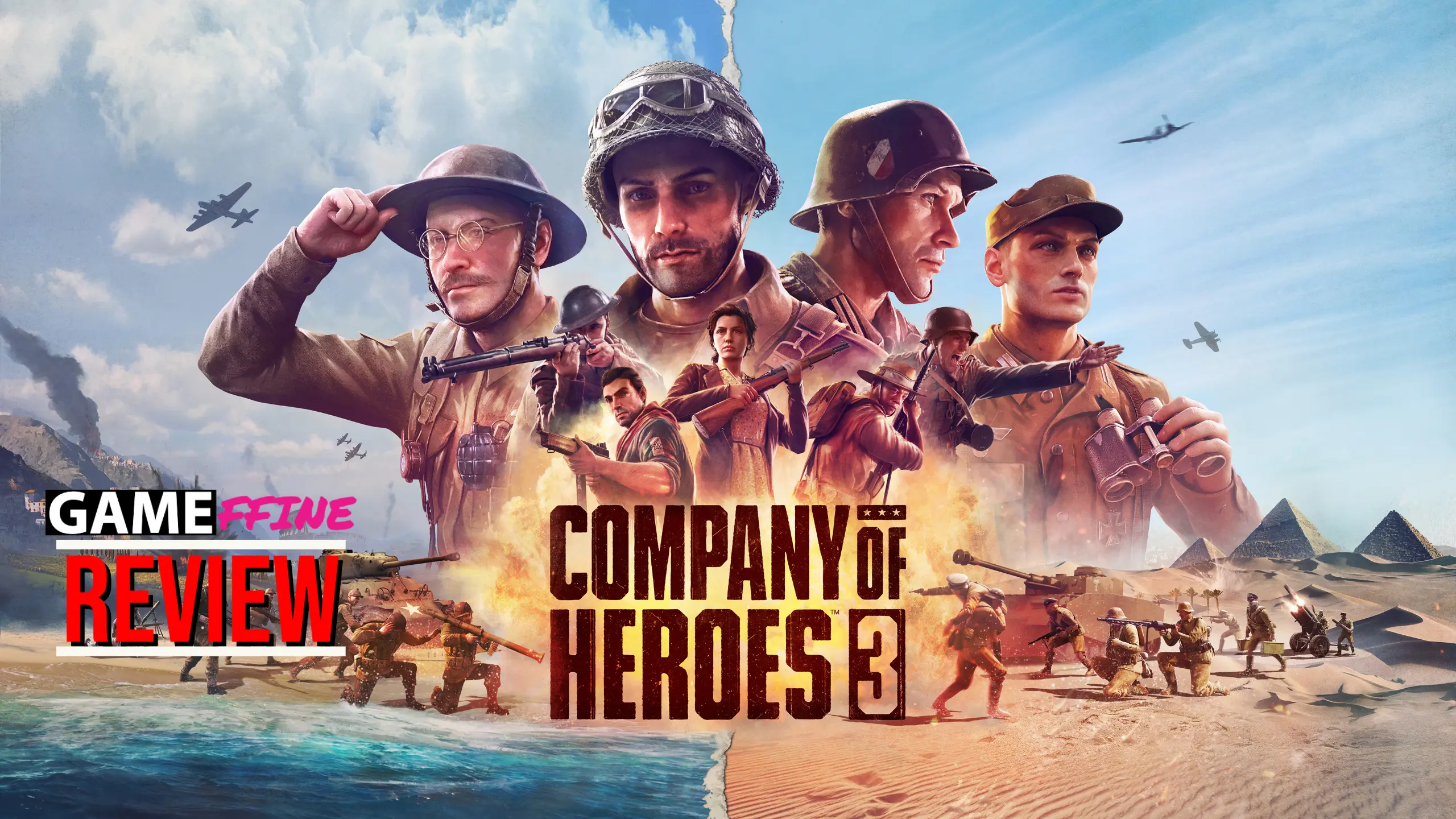






1 comment